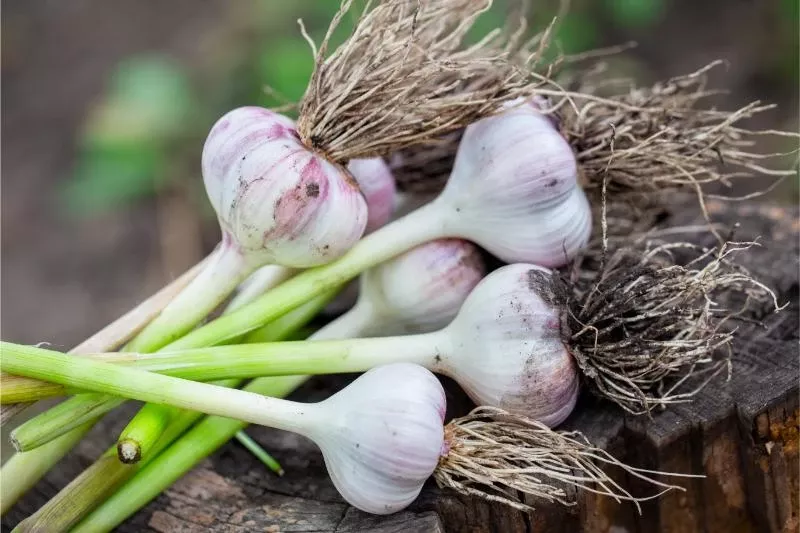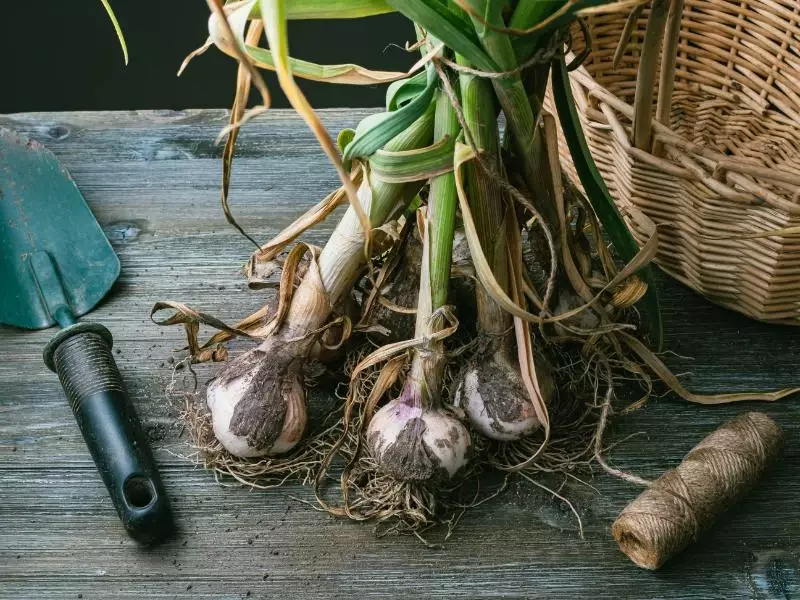The Best Time to Plant Garlic in Southern Ontario
If you're aiming to grow big, flavorful garlic in Southern Ontario, timing your planting is crucial. By planting approximately 4–6 weeks before the region's first expected frost, you can ensure the garlic has adequate time to develop strong roots without sprouting too much foliage before the winter, priming them for robust growth come spring.
In Southern Ontario, garlic is best planted in the fall, from late September to early November. This timing allows the garlic to establish roots before the ground freezes and results in vigorous spring growth and larger bulbs at harvest the following summer.
But here's the twist: while most gardeners plant in the fall for a summer harvest, you could also plant garlic in the early spring if you missed the fall window. However, spring-planted garlic might not be as large or robust. Garlic planted in fall also tends to develop a deeper, more complex flavor and larger bulbs compared to spring planting.
Summary
- You may find that adjusting the planting time slightly earlier or later could be more successful, depending on your specific location and the current year's weather patterns.
- The preferred planting period allows garlic to benefit from fall's cooler temperatures for root establishment, with ideal soil temperatures being consistently above 0°C (32°F) but below 60°F (15°C).
- Hardneck garlic varieties, better suited to Ontario’s climate, should be planted about three weeks before the ground freezes, typically around late October, with adjustments made based on local weather forecasts.

On this page:
Plant Garlic Between October and November
Typically, the ideal planting window in Southern Ontario falls between October and November. This timeframe allows the cloves to establish a strong root system before the winter sets in, while still ensuring they get a period of cold, known as vernalization, necessary for bulb development.
Hardneck garlic varieties, which are more suited to Ontario’s climate, should be planted around three weeks before the ground freezes. Typically, late October is safe, but be sure to adjust depending on your local weather forecasts.
For softneck garlic, which are less common in Ontario due to their preference for milder climates, similar timing applies—though they might not require as lengthy a vernalization period.

Identifying Frost Dates
In Southern Ontario, fall is the ideal time for planting garlic, as the cloves require a cold period to establish roots before the ground freezes. To find your first fall frost date, check reliable gardening resources or local weather stations.
In Spring, the concern shifts to the last frost date. You'll want to ensure that any potential late cold snaps don't endanger young garlic shoots emerging from the soil. Keeping track of soil temperatures can also give you clues; garlic thrives in soil that's consistently above 0°C (32°F).
Fall planting for garlic is preferred over spring planting because it allows for a longer growing season.
Fall planting
Hardneck garlic, the variety best suited for cooler climates, should ideally be planted in the fall. You'll want to aim for soil temperatures just below 60°F (15°C), typically several weeks after the first autumn frost but well before the ground freezes.
This period allows garlic cloves to establish roots while still requiring vernalization, a period of cold temperatures, to develop properly. Adding a layer of mulch such as straw can help protect the planted garlic from extreme cold.
Can your garlic plants survive the frost? Find out here.
Spring planting
Although not as common, planting garlic in the spring is possible. In this case, choose softneck varieties, as they are less dependent on cold to initiate growth. For optimal results, ensure the soil is workable and has warmed sufficiently.
Spring planting usually leads to smaller bulbs, as the growing season is shorter. Remember to provide consistent moisture and consider a fertilizer high in nitrogen for strong green top growth.
Harvesting time
Garlic is ready for harvesting when half the leaves have turned brown, which often happens during summer in Southern Ontario. The exact timing will depend on the planting date and seasonal conditions.
After harvesting, garlic bulbs must go through a curing process in a dry, well-ventilated area before storage. This step is crucial to prevent mold and rot.

Understanding Your Climate Zone
In Ontario, climate zones vary from the extreme cold of the north to the milder conditions in the south. Southern Ontario, including Toronto, generally falls within climate zones 5 and 6, where winters are cold but less severe than in the north.
| Zone | Planting Season |
|---|---|
| 5 (e.g., Toronto) | Late October–November |
| 6 | Early to mid-October |
These zones enjoy a moderate climate with four distinct seasons. Garlic thrives in this region, but timing is important to navigate the fluctuating temperatures experienced here.
As you transition to Northern Ontario, the climate becomes harsher with the potential for extreme cold. This difference means adjustments in planting times to ensure garlic survives the winter and benefits from early spring growth.
Areas like Northwestern Ontario face even more rigorous conditions, and the planting schedule shifts earlier to accommodate an earlier onset of winter. Unlike the south, this part of Ontario requires garlic to be in the ground well before the first frost to establish roots.
To optimize your garlic planting:
- Check local frost dates.
- Monitor weather conditions for sudden changes.
- Note that while colder zones demand earlier planting, garlic also needs a cold period to develop properly.
Planting garlic in Zone 5
In this zone, you experience cold winters and warm summers. The temperatures can fluctuate, so it's essential to keep track of local weather forecasts for sudden changes that can affect your planting schedule.
- Spring: Moisture levels in early spring can be quite high due to melting snow and spring rains.
- Fall: Fall brings cooler temperatures and is often preferred for planting garlic, as the ground has not yet frozen but is cool enough to encourage clove dormancy.
For garlic growers in areas like Toronto, which tend to have a slightly milder climate within this zone, it's best to plant your garlic when temperatures consistently stay below 15°C (60°F).

How to plant garlic in the fall
- Choose a sunny site with well-draining soil. Garlic does not grow well in areas that are too wet.
- Prepare the soil by loosening it and mixing in some compost or well-rotted manure to provide nutrients.
- Break apart the garlic bulbs into individual cloves shortly before planting. Select the largest cloves for planting, as these will typically grow into larger bulbs.
- Plant the cloves pointy end up, about 2–3 inches deep and 6 inches apart, in rows spaced about 12 inches apart.
- Cover the cloves with soil and then add a layer of mulch, such as straw or leaves, to insulate the ground and help prevent heaving during freeze-thaw cycles.
After planting, the garlic will need little maintenance over the winter. In the spring, as the weather warms, you can remove some of the mulch if it's very thick to allow the soil to warm up faster. Keep the area weeded and water the garlic if there are long periods without rain.
By planting in the fall, you give your garlic a head start, and you can expect to harvest it by mid-summer the following year, typically in July or August, once the lower leaves start to brown.



